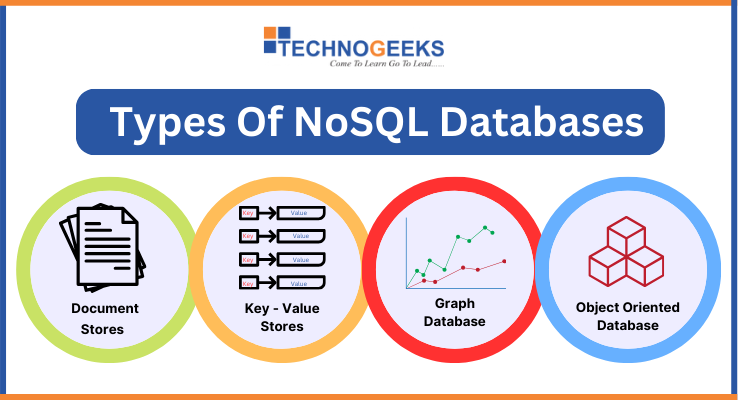Table of Contents
ToggleIntroduction
NoSQL (also known as non-relational database) is a type of DBMS that offers different techniques for storing and retrieving large amounts of data. It includes different types of data models, like object oriented , graph, key-value, document oriented, etc.
Learning about NoSQL databases such as MongoDB, Amazon DynamoDB, CosmosDB, etc. is beneficial in the field of data management and development. This is because NoSQL databases offer many features to handle large amounts of data, such as flexible schemas, scalability, and support for different data types.
As per PR Newswire, the NoSQL market is expected to grow to $86.3 billion by 2032, with an annual growth rate of 28.1%. This statistic shows that knowing about NoSQL databases is helpful.
In this blog, we will explain different types of NoSQL databases and their important features to help you understand their usefulness for different applications.
Enroll now and take the first step towards a successful career. Click here to join our MongoDB course today!
Types Of No-SQL Databases
There are different types of No-SQL Databases such as –
- Document Oriented Database
- Key-Value Stores
- Graph Databases
- Object Stores Database
Let’s explain one by one databases –
Document Oriented Database:
A document-oriented database is a type of NoSQL database which means Non-relational database that stores and retrieves data in the form of documents. These documents can be in formats like JSON (JavaScript Object Notation) or XML (Extensible Markup Language).
So the benefit of using a document-oriented database is that to gain information, you don’t need to search through rows and columns; you can retrieve all the information directly from the documents.
It’s a really easy way to store and find data, and lots of applications and websites use it to keep things organized such as –
- Order Details
- Inventory Management
- Medical Records
- Real Estate Listings
For Example –
In this example –
- Each attribute (such as id, first_name, email, etc.) is represented as a key-value pair.
- The entire document is enclosed within curly braces {} indicating a JSON object.
Also Read – Deadlock In DBMS
Key-Value Stores:
Key-value stores are the basic type of NoSQL databases. They store data as key-value pairs. A key-value data store is a database that saves data as pairs of keys and values.
In simple terms, keys have their own key for identification (Unique Key Identifier) that help you find something quickly, and the values are the actual things you want to find.
For Example –
Suppose you have a key-value store for storing shopping lists. Each item on the list is a value, and its name is the key.
| Key | Value |
| Milk | 1 liter |
| Eggs | 1 dozen |
| Bread | 2 loaves |
Examples Key-Value Stores databases are –
- Amazon DynamoDB
- Apache Cassandra
- Redis
- Azure Table Storage
- Amazon ElastiCache
Also Read : Deadlock In DBMS
Graph Databases:
Graph is a mathematical concept that explores the relationships and connections between different elements. But you may have a question in mind: what exactly Graph in database is?
Graph databases are a type of NoSQL database that uses graph structures with nodes, edges, and properties to represent and store data.
In a graph database:
- Nodes: It represents entities such as people, places, or things.
- Edges: It represents the relationships between nodes.
- Properties: Provide additional information about nodes and edges.
Examples Graph Databases are –
- Neo4j
- Amazon Neptune
- JanusGraph
Also Read – Application Of Graph In Data Structure
Object Stores Database –
Object Stores Databases (AKA object storage databases or object-based storage systems) are a type of No-SQL database for managing and storing unstructured data as objects.
It means instead of using tables as in SQL programming, data is organized into simple objects. These objects are stored in a simple, flat structure instead of complex hierarchies.
Examples of Object Stores Database –
- AWS S3 (Simple Storage Service)
- Google Cloud Storage
- Microsoft Azure Blob Storage
- OpenStack Swift
Also Read – Types of Attributes in DBMS
Conclusion –
- I hope you get a better understanding of the different types of No-SQL databases.
- There are different types of NoSQL databases, such as document-oriented databases, key-value databases, graph databases, and object stores databases. Each has unique features & use cases.
- Choosing the right database depends on your company’s project or understanding your data’s relationship to your application.
- Keep one thing in mind: Choosing the right database for your project is important for making your application work well and grow when needed.
Technogeeks offers the best MongoDB training in Pune, providing industry-based, job-oriented, hands-on, interactive training with assignments and real-time MongoDB projects, complete with source code.
Contact Us +91 8600998107 / +91 7028710777 For more information.















